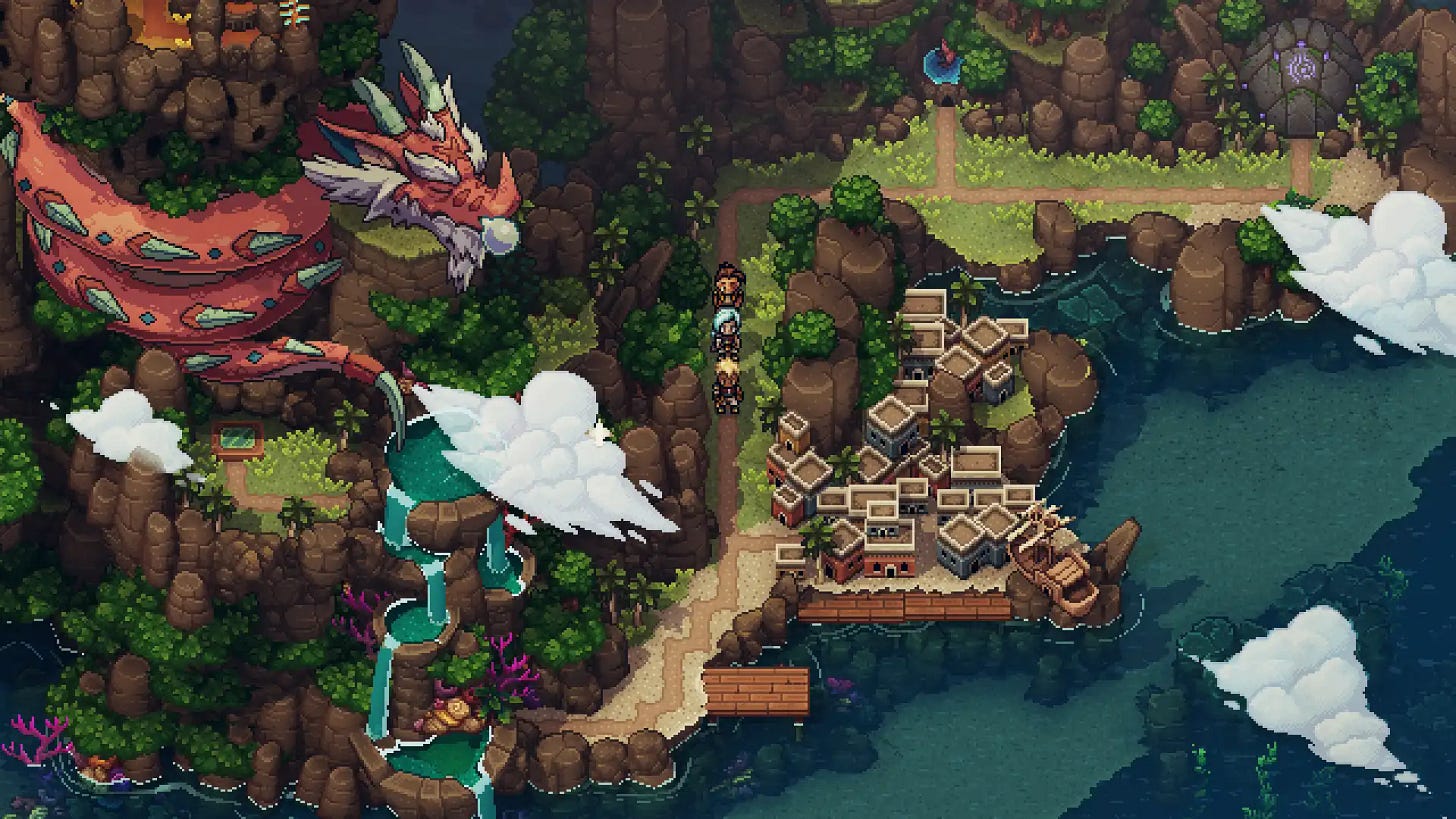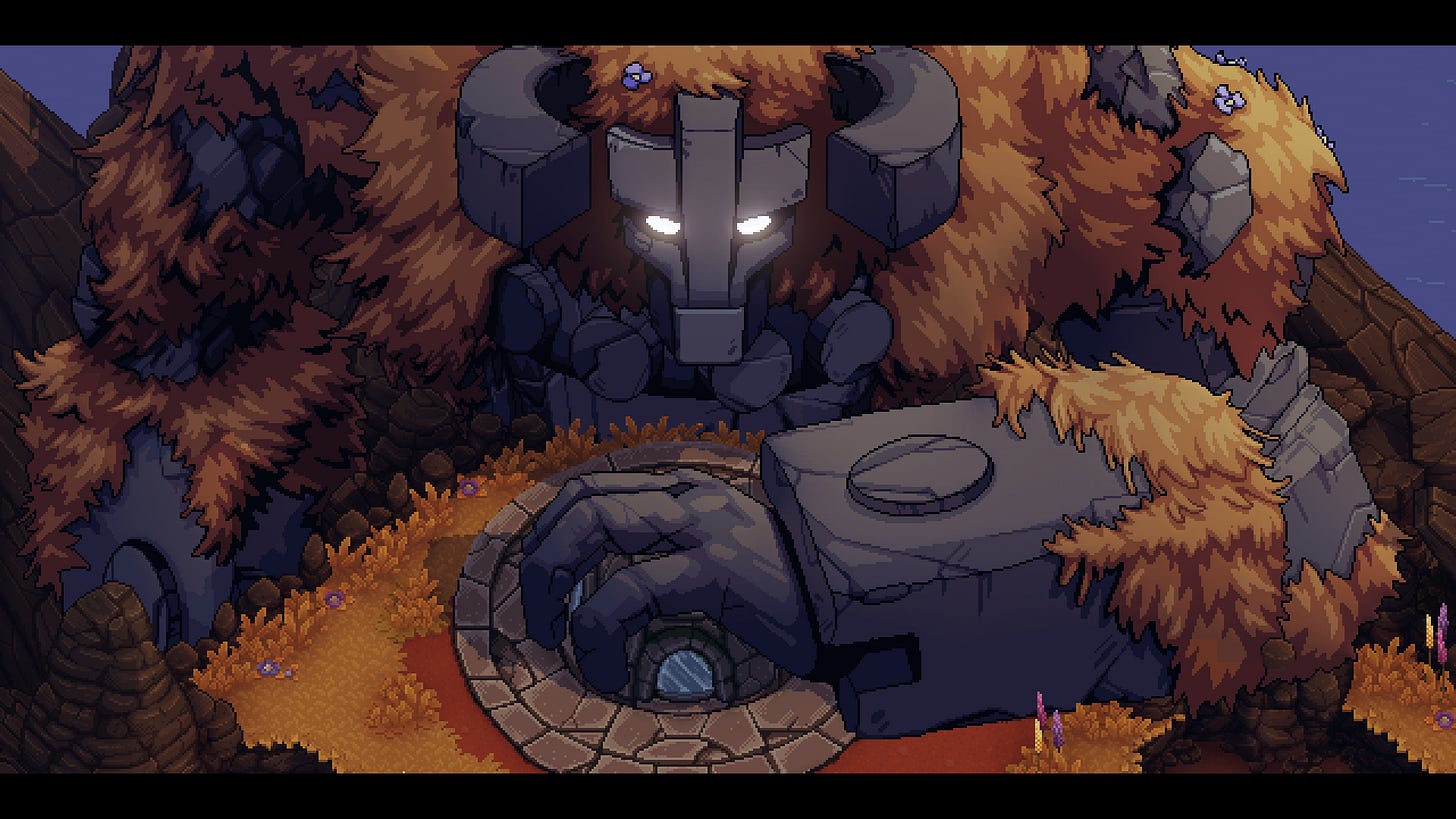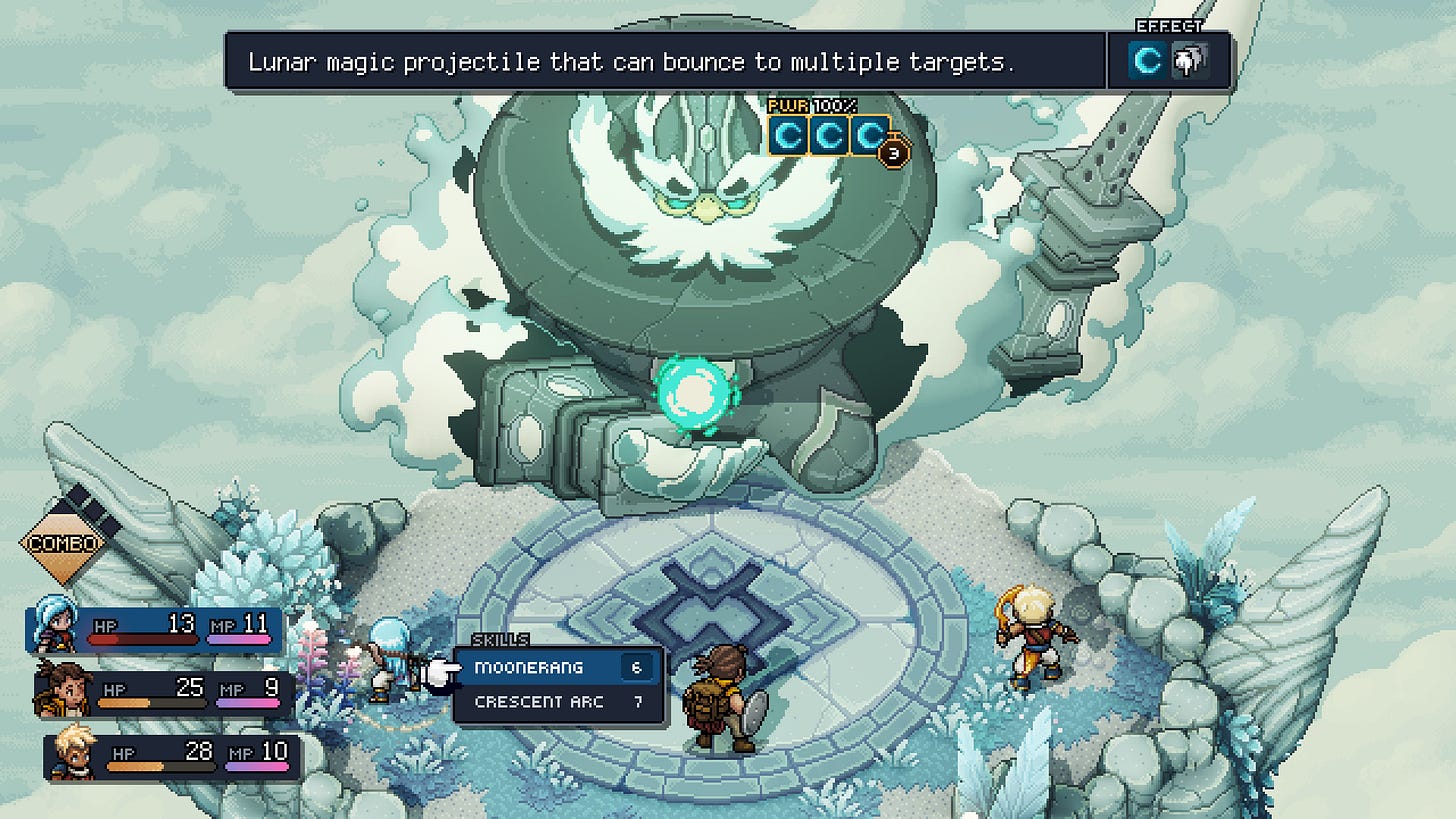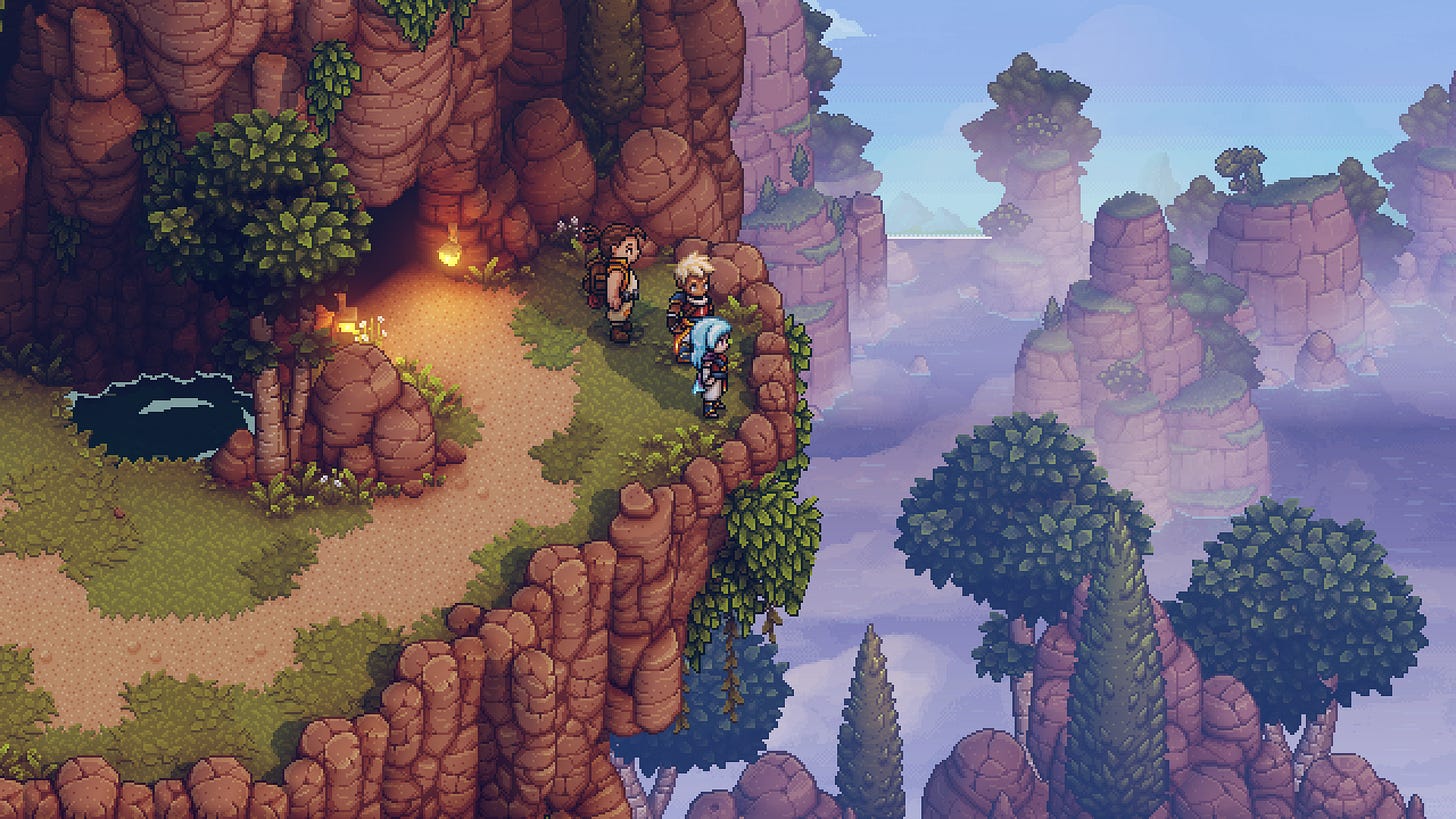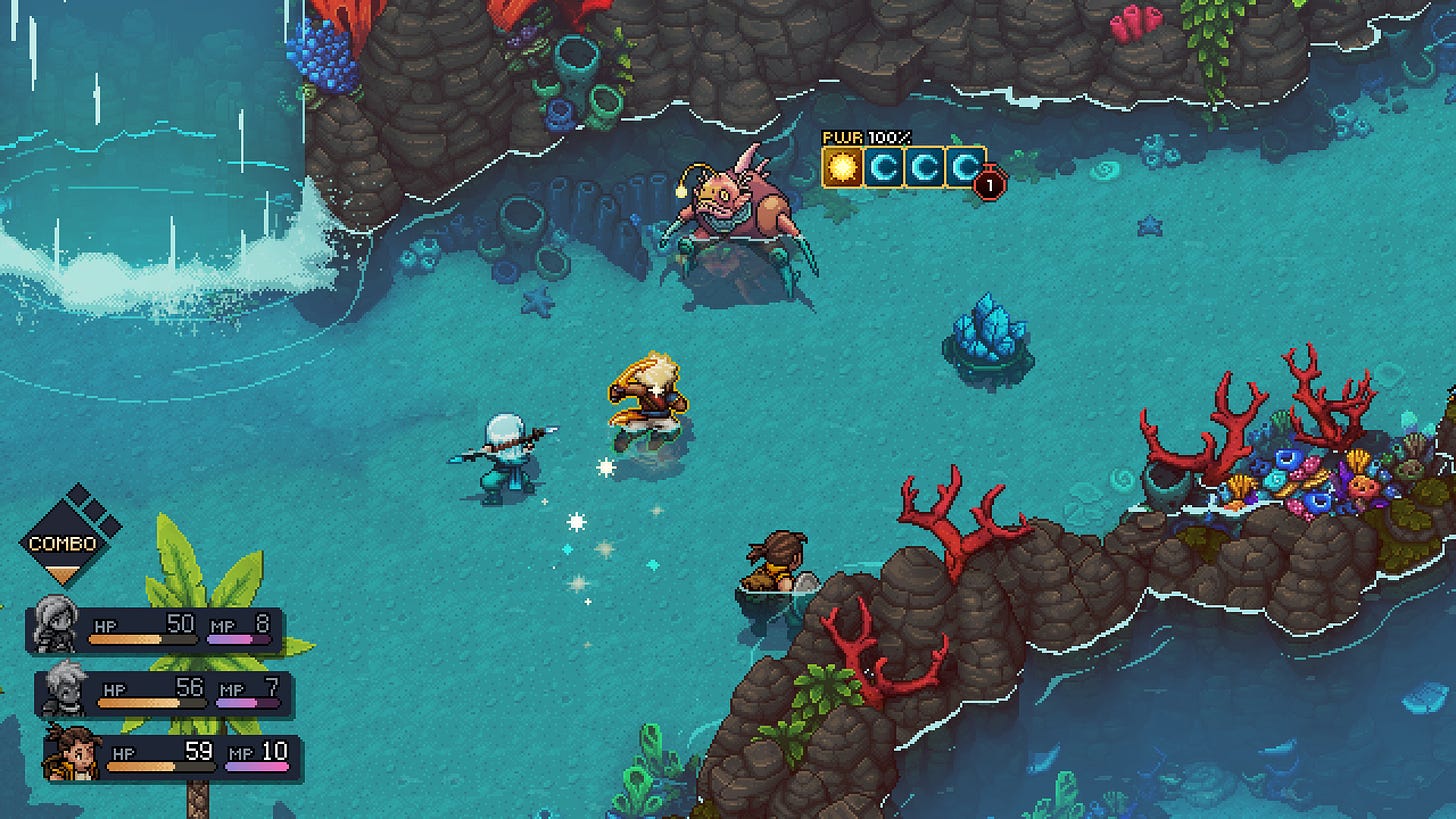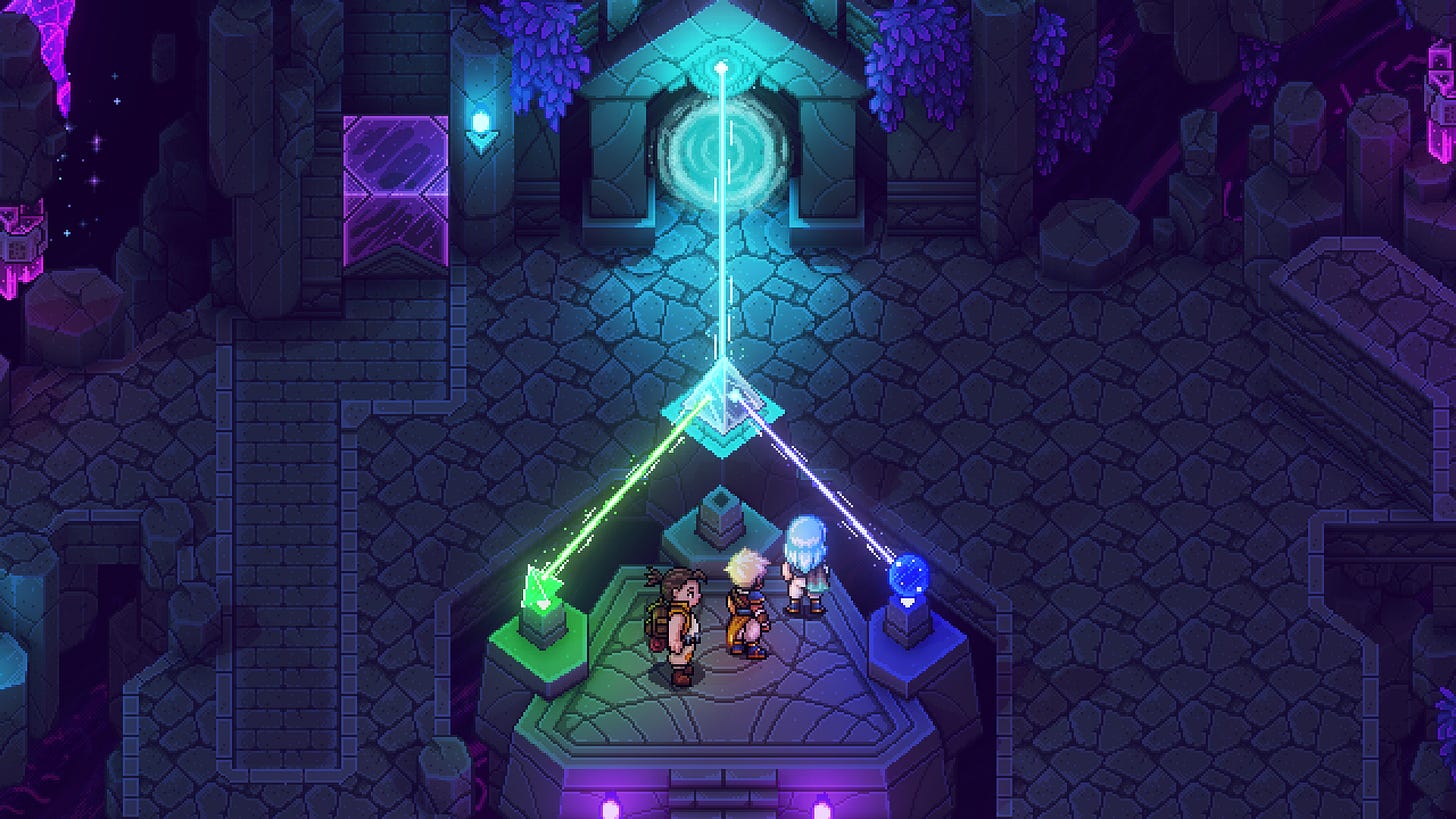Sea of Stars
A sputtering start shifts gears into a roaring good time
Let’s just cut to the chase. Sea of Stars was a huge disappointment for me…at first. This had been one of my most anticipated indie games for years, and it just didn’t really wow me at all. Don’t get me wrong, I was enjoying it, but in a world where I had just come off Chained Echoes earlier in the year, I felt that while the individual components were great, I wasn’t seeing the magic or innovation I had hoped.
And then that changed.
By the end, I was completely sold on everything Sabatoge was trying to do. I don’t know if I’ve ever done a bigger 180 while playing a game (outside of maybe Tony Hawk), and I couldn’t be happier that I ended that way. From the very beginning, Sea of Stars aims to deliver the perfect retro experience. It takes all of our memories from our favorite classic RPGs and presents a pristine and idyllic version of the memories we conjured from the past. And while it took some time, boy, did it win me over.
Sea of Stars is the story of two heroes imbued with the power of the sun and the moon who were chosen by fate. They are raised as Solstice warriors who are destined to patrol the world and shut down evil beings called Dwellers before they can fester and evolve into World Eaters. Along their journey, they are joined by a motley crew of companions who dedicate their unique skills to the cause.
The gameplay is broken into two sections: your in-battle turn-based combat, and your (extremely) Metroidvania-lite exploration that you experience across the game's dozens of explorable (not to be confused with open-world) areas.
The combat, while simple, is a pretty interesting take on your traditional turn-based combat. The action entirely revolves around weaknesses and timing. The weakness mechanic essentially allows you the cancel an enemy’s upcoming attack if you can hit them with all of their weaknesses (which are randomized for every upcoming attack) before it reaches their turn. As you attack and defend, you can also gain small bonuses (in the form of extra damage, mana recovery, less damage taken, and other benefits) by timing a press of the action button with the event happening on screen.
The combination of dynamic gameplay modifiers and rhythmic action is a great hook to get the player locked in with the flow of combat and help maintain engagement in a traditionally slow genre. Add in the character-specific combo attacks and unique ultimate abilities, and you have a pretty big playground to experiment in. On the flip side, many of the generic enemy encounters feel like fodder more than a real challenge, and despite all of the stimulating overlay layered over combat, many of these fights still feel mindless.
The art, from both a visual and audio perspective, is stunning. The game has some of the best pixel art set pieces and character pieces I’ve seen in years, and the score by Mitsuda and company is competing as one of the best scores of 2023. I could point out dozens of designs from the giant dragon snared around one of the early maps to wise (and lethal) Elder Mist that had me in awe as I continued to unravel the creativity of this world. And within the first 30 minutes, I had figured out my favorite theme was going to be that of the childhood companion, Garl. These are just a few examples of how these two media came together to provide an experience that really forces a smile on your face.
So why was I so cold on this game to begin with? Well, I think it has to do with the nostalgic play pacing of the game. This game is not trying to push RPGs forward; instead, it almost serves as a retrospective of the past. It takes common tropes and mechanics of the genre and smooths out the edges. So if you’ve played a lot of RPGs, this game will feel very familiar, and that’s the point.
While the combat mechanics can be really interesting in tougher scenarios, I found a lot of the early game to be quite easy. On top of that, while I enjoyed the story, in the beginning, I took it as more of a predictable, cute hero story than a deep and fleshed-out narrative. As a result, very early, I began yearning for something to take this game to the next level. It was fun, but it wasn’t anything I hadn’t necessarily seen before. And when you consider what high expectations I had for this game before jumping in, I ended up quite disappointed in the beginning.
Despite that, I wanted to see this game to the end and I’m glad that I did, because given more time, Sabatoge was really able to build on the foundation they had laid out in the first few hours. All of the different aspects that I was lukewarm on started to sing out of nowhere. The characters that I had encountered started to open up and reveal their aspirations and conflicts. I discovered more combos and unlocked some devastating ultimate abilities that allowed me to switch my gameplay up in interesting ways. The bosses started to arrive at a faster clip, and the journey the main characters were on started to take drastic and sudden turns I wasn’t expecting. It was then that I finally started getting the vision. I started getting lost in a game that felt familiar but new.
The world of Sea of Stars is one I will not soon forget. From the ancient lore told by Teaks that always had a way of sneaking into our adventure, to the strange hidden locations on the overworld map whose true purpose stayed secret until the very last moment. While it comes together slowly, it’s magical when it ultimately clicks. The emotional moments hit, the mysterious moments interest, and exciting moments get you perked up in unexpected ways.
To all my fellow retro RPG fans out there, I implore you to give this game a fair shake. Sabatoge has an exciting and touching story that I think deserves to be experienced. This is their love letter to the genre. Sea of Stars delivers that story in an extremely polished package that successfully revises tons of missteps made by old-school RPGs and highlights past innovations. Commit to the journey, and maybe they’ll make a believer out of you like they did me.


